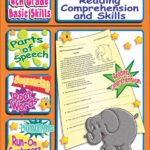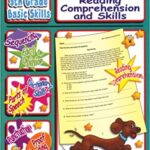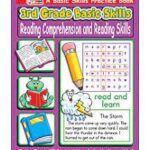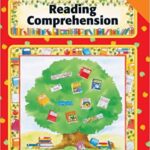Basic Skills Reading Comprehension, Grade 2. Basic reading comprehension and reading skills activities necessary for developing the skills students need to succeed! Free eBook
Basic Skills Reading Comprehension, Grade 2

Basic Skills Reading Comprehension, Grade 2
To all teachers, students, parents and guardians, this worksheet suits for students as well as individuals who need to acquire basic reading and writing. The language used is simple and clear enough for students to understand.
Teach and reinforce important basic skills! Use the individual activities to support the units you are teaching and/or provide homework practice. The high-interest, age-appropriate activities are both motivating and challenging. Students will have fun learning new skills and concepts and at the same time add to their existing knowledge.
The concepts that young readers learn in preschool, kindergarten and first grade will provide a strong foundation for them as they master more complicated texts in the school years to come. These most basic skills are vital to their future success as readers. Unfortunately, many students do not develop a robust toolbox of strategies when they are young, and they then can fall behind when texts become more sophisticated and content-heavy. In order to succeed in the upper elementary years and beyond, students need to learn critical reading skills and strategies when they are young. The older a student becomes, the more challenging it can be to close the gap and remediate reading instruction.
Basic Skills Reading Comprehension, Grade 2
Once students reach 2nd grade, they’re often ready to accelerate their learning. That’s because at this point, they’ve adjusted to the more rigorous learning environment initially encountered in 1st grade, and are able to further expand their skills and knowledge in every subject area.
In 2nd grade, your child becomes a more experienced writer and reader by practicing their skills in more complex and comprehensive ways. Students read bigger and more complicated books, and write longer and more in-depth pieces. What’s more, second graders pursue projects that involve research and critical thinking.
Reading in Second Grade
Second graders continue to develop their literacy skills as they learn more complex words and absorb longer, more rigorous texts in a variety of genres including fiction, non-fiction, and poetry. Students also expand their reading comprehension skills as they talk about what they read, and develop more advanced ideas around those topics. Just like in previous years, second graders also continuously practice reading as they use texts for other subjects throughout the day.
To build reading skills, your second grader:
- Reads more complex words, such as two-syllable words.
- Reads words with common prefixes and suffixes, for example: pre-, re-, un-, –able, –ad, and –er.
- Reads grade-appropriate, irregularly spelled words (consult your child’s teacher for a specific list of these words).
- Reads a variety of texts including fiction, nonfiction, fables, and poetry.
- Understands the structure of a story, specifically the purpose of beginnings (introducing the text) and endings (concluding the text).
- Understands the most important details of a text—its main purpose and the “who,” “what,” “where,” “when,” “why,” and “how.”
- Talks about characters’ responses, main events, lessons learned, and important ideas or concepts.
- Begins to make connections within and between texts.
- Compares at least two different versions of the same story, such as two versions of a classic fairy tale.
- Reads at grade level with correct accuracy, pace, expression, and comprehension.
- Self-corrects mistakes and re-reads when necessary.

BROWSE THE EBOOK

IF YOU ARE INTERESTED IN BUYING THIS BOOK, CLICK ON THE BUTTON BELOW

WE DO NOT SUPPORT COPYRIGHT DISPUTES – USE ONLY FOR TEACHING AND LEARNING PURPOSES





